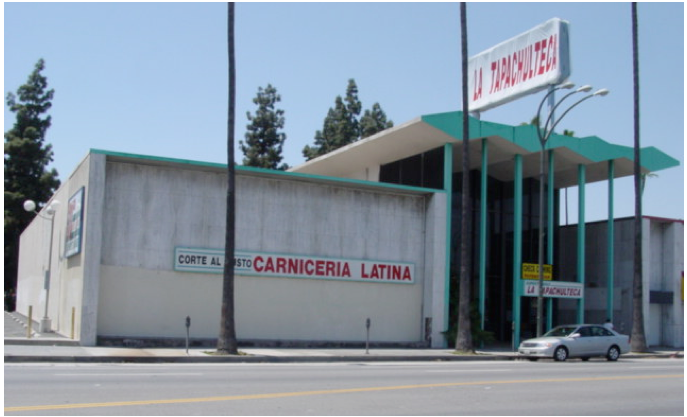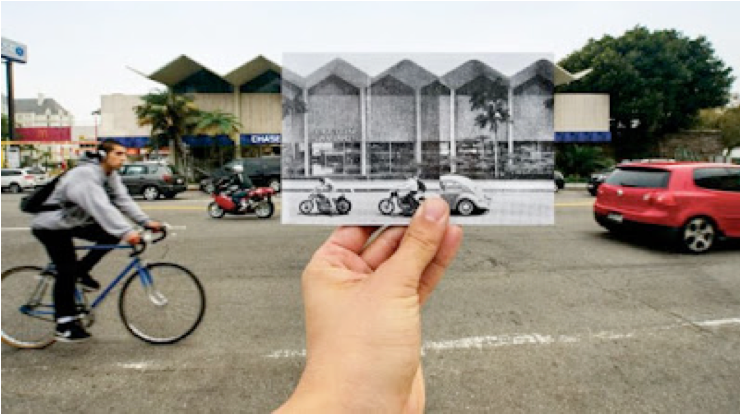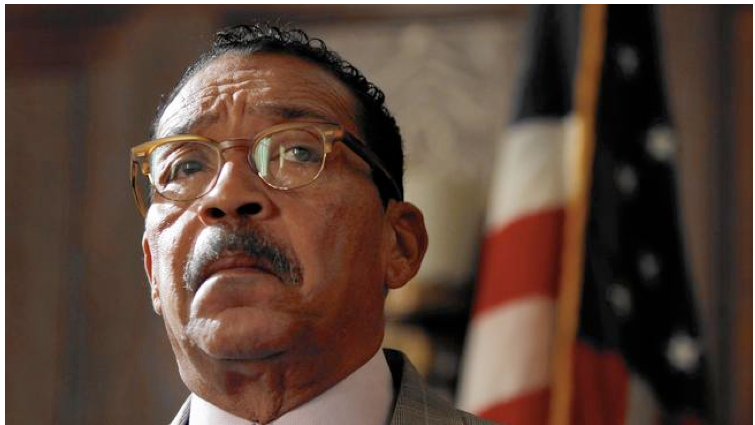LESSONS FOR CHARTERS--In 2014, when teachers at Los Angeles’ Jefferson High School opened their own charter school, the Student Empowerment Academy, they hoped to bring the larger world into their classrooms. They wanted to show kids opportunities outside of their neighborhood, where academics often took a back seat to economic survival. Kids would learn science, math and social studies by solving real-world problems in teams, just as they would in the work-force, while teachers would have autonomy and genuine decision-making authority.
But faculty members soon found themselves facing one real-world problem they hadn’t bargained on -- a tug of war for power with administrators and board members. Conflicts reached a boiling point in 2015, with staff leaving en masse – either fired, pushed out or stressed beyond their limits.
The school also ran afoul of the Los Angeles Unified School District, which oversees the city’s charter schools, for financial mismanagement and other shortcomings. With enrollment dwindling, Jefferson announced that SEA would have to move to another facility for the 2017-18 academic year. If these obstacles weren’t enough, in its last year the fledgling charter school was led by a former professional football player with no teaching background and little administrative experience, and who, along with the academy’s board of directors, would throw the academy and students under the school bus once the going got tough.
SEA’s story highlights the precarious nature of small independent charter schools, and brings to light the fact that charter boards of directors are largely independent and don’t always have to account to parents, teachers and communities for decisions that affect students. In the end, the academy’s board of directors concluded that SEA faced problems that were so intractable that the only solution was to shut it down, and last June, two weeks after classes ended for summer break, the directors voted for permanent closure.
Teachers and parents were left reeling. Parents demanded to know what happened to the public funds that created the school, and where their kids would attend classes the next year. Teachers argued that more could have been done to save the school.
Jefferson High sits in a South LA neighborhood where corner stores, modest homes and ramshackle apartments huddle cheek by jowl with small factories, all in the shadow of downtown’s skyline. Alumni include diplomat Ralph Bunche, the first African American Nobel laureate, choreographer Alvin Ailey, jazz saxophonist Dexter Gordon and singer Etta James. About a decade ago Jefferson became notorious for massive brawls that erupted on campus. Television news reports blamed racial tensions, but more-in-depth accounts noted that nearly 4,000 kids were crammed into a school built for a third that many.
Six years ago in response, the school created small learning communities to break down the anonymity of the giant high school. One of those initiatives was the New Tech High School for Student Empowerment Academy, a sort of school within a school. When, in 2013, administrators announced staff cuts and larger class sizes, faculty member Linda Rahardjo was one of several teachers who designed the 300-student independent charter version of SEA to carry on the work they had begun.
Rahardjo told Capital & Main the decision to go charter was an ultimately futile attempt to preserve what the faculty had originally built. The teachers who formed SEA were a closely-knit group who came to school early and stayed late to create a safe place where students could learn to study and think. “Being able to pass their classes became the in-thing,” she noted, adding that the students had begun to put brains above brawn, especially where disputes were involved. “They’d step back [from a fight] and say, ‘That’s not what we do here.’” It was a cultural shift at Jefferson.
SEA’s troubles began in earnest with a perfect storm of problems that included its coming expulsion from the Jefferson High campus, declining enrollment and financial instability — all of which exacerbated tensions between the academy’s faculty and its board members. Matters weren’t helped by a financial scandal.
Earlier this year LAUSD demanded an explanation after SEA paid an outside contractor more than $130,000 for services that should have been provided for free by the school district, and for supplies that district staff said would have been much cheaper if purchased from LAUSD.
For instance, the contractor charged nearly $5,000 for toilet paper that district officials said LAUSD would have sold for less than $1,000. He allegedly inflated shipping and handling fees and billed $2,000 for taking notes at four board meetings.
One of the SEA board’s most consequential choices, however, was to hire of one of its own to run the school as it was floundering at the end of the 2015 school year. The last principal had been let go amid student walk-outs and teacher dissatisfaction. Had there been other eyes on the process, and greater scrutiny of the next principal’s track record, the new man might not have landed the job.
Marvin Smith is a former National Football League linebacker who played for the LA Rams in 1983 until, he said, he was sidelined by an injury. He has since resurfaced as an ordained minister, a radio talk-show host and an advocate for low-cholesterol diets. Smith doesn’t appear to have a teaching or administrative credential. In his resume, he claims a master’s degree in business from Azusa Pacific University; however, a university spokeswoman said Smith enrolled in a program in organizational management and attended classes, but she could find no record of his graduation.
More notably, Smith is a charter school devotee who said he intends to remain in the field his entire life. But so far, his educational ventures have been short-lived.
He founded and directed the Doris Topsy-Elvord Academy, a small charter middle school in North Long Beach. But he closed the school three years ago because of some of the same financial and enrollment problems that would plague SEA.
The SEA board has been remarkably charitable about Smith’s CV.
“Sometimes you learn more by failing than succeeding,” said SEA board chair Tommy Newman, when asked about the closure of Smith’s Long Beach charter venture. He told Capital & Main that the board stood by the decision to hire Smith.
Ref Rodriguez, an LAUSD school board member whose district includes Jefferson High School, called Smith a “wonderful person,” while admitting that he lacked understanding of teaching and learning.
Others have not been so sanguine.
“Not only did this guy not know instruction but he didn’t know how to manage a school,” Betty Forrester, a United Teachers Los Angeles vice-president told Capital & Main. “Top it off with a lack of transparency, communication and democracy. Those things make people wonder.”
Smith explained to Capital & Main that he took the SEA post to bring unity and calm to the school, insinuating that, operating behind the scenes, disgruntled teachers had sparked the student protests that led to the ouster of his predecessor. It’s an opinion both Rahardjo and student leader Karen Espinoza reject.
“The reason I stepped in is, I don’t like kids being manipulated by adults for adult agendas,” Smith said, without identifying those agendas. “We have to push for the kids.” After assuming control of SEA, Smith said he embarked on what he called a “team effort” to overhaul the school.
On the contrary, Forrester said, Smith did not truly welcome teacher collaboration, which she argued would have given the school a better chance to succeed.
“People didn’t know what was going on,” she said. “There were no clear answers. It was like, ‘Shut up, go into your classroom and do what we tell you.’”
While the school struggled during its last months, Smith was already exploring new charter opportunities for himself in Ohio, with an apparent assist from one of SEA’s board members. Bryan Bentrott, a Newport Beach developer, who is a personal friend of Smith’s, wrote him a letter of support for the venture just six months before SEA closed. Bentrott, who also served as a board member for Smith’s failed Long Beach charter school, portrayed Smith as a charter superhero who had saved the academy from closure.
“Last year Marvin singlehandedly rescued a charter school in Los Angeles,” Bentrott wrote. “Despite tremendous odds, Marvin stepped in and saved a school, which was on the verge of shutting down.”
In reality, SEA was in its death spiral.
As teachers rallied to solve SEA’s problems, Smith may have already given up, perhaps having gotten wind of the coming closure. The school’s budget documents show that in May, he cashed out his paid time off, collecting over $11,000 a month before the shutdown vote.
Smith may still be pursuing the chance to open a new charter school in Ohio. He wouldn’t answer questions about it. Such applications are difficult to track because many private and public agencies are authorized to approve charters in Ohio.
While the teachers’ efforts to help save the academy didn’t bear fruit, José Cole-Gutiérrez, a director at LAUSD’s charter school division, said they weren’t necessarily wrong to try. Unless it had a fatal flaw, such as a serious threat to student safety, he said his office would have considered renewal if SEA showed improvement.
It also turns out that the school’s financial picture might not have been as bleak as Tommy Newman and his board colleagues painted. A draft audit shows the school ending 2016 $175,000 in the black, although he contends that late legal bills might not have been factored into the bottom line.
Newman, an attorney who currently works as communications and public affairs director for a nonprofit housing developer, also cited an unpaid loan, high personnel costs and legal expenses associated with negotiations for a union contract as reasons the school could not continue. He also said the school faced risk because of the contractor affair, although Cole-Gutiérrez said no specific action on the overpayment is currently contemplated, adding that LAUSD has the authority to ask its inspector general to investigate or refer the matter to the district attorney.
SEA’s closure meant kids would lose the close teacher-student relationships the school had cultivated, and either have to navigate a large high school or scramble for a spot elsewhere long after enrollment decisions had been made for the next year.
“To me, the shame is that this was a teacher-led and teacher-initiated school,” said LAUSD board member Ref Rodriguez. “That we were not able to make it work pains me.”
A couple of months before the closure vote, social studies teacher Kari Mans and art teacher Bill Neal had both joined with co-workers in a last-ditch effort to solve some of the school’s most vital issues, like finding space for the school to operate out of, or recruiting students. In an interview, Neal said he was still hopeful, even though he said his and the other teachers’ efforts had largely been ignored or rebuffed by Smith.
“We were starting to get this sinking feeling,” he said. “All of this had already been decided. It was like a foreboding. This is going to be bad.”
“It was heart-breaking,” Newman acknowledged. “It felt like failure. I’d invested a year and a half of my life in it.”
However, he argued, the school couldn’t survive financially because of low enrollment and lack of funds. He contended that even if SEA made it through another year, the Los Angeles Unified School District would be unlikely to renew its charter because of poor oversight reports. Still, the latest report also highlighted strengths, such as the school’s $250,000 Walton Foundation grant and its substantial implementation of the innovative aspects of its charter.
Teachers pointed to other assets: Graduation rates were relatively high, and many in the class of 2016 were bound for college. Mans, who had recently joined the faculty, told Capital & Main that the school’s project-based learning approach produced students who could think critically and solve problems.
For all the dedication he described, Tommy Newman didn’t have to answer to anyone for his vote.
He and his four fellow board members were essentially in charge of a very tiny school district, with final responsibility for everything from finances to personnel to purchasing, albeit with oversight from the LAUSD.
But unlike the LAUSD’s board members, SEA’s weren’t elected to their posts and when they decided to throw in the towel, they faced no consequences. They were not required to show they’d done everything possible to keep the school open. With the exception of the sole parent representative on the board, they didn’t live in the community and could return to their jobs or businesses after the closure without looking back.
The LAUSD’s Cole-Gutiérrez said he takes closures seriously, but that a school’s board of directors holds ultimate decision-making power.
“It’s contemplated in the Charter Schools Act that there is an exchange of autonomy for accountability,” Cole-Gutiérrez said, adding that shuttering schools is sometimes a necessary part of that.
In addition to Newman and the lone parent, the board included a retired middle school principal, Bentrott and another attorney. The board might have been savvier than some, but Newman said he had no idea of the problems he’d face when he agreed to join.
That’s not uncommon, said UTLA’s Betty Forrester, who got involved at SEA after teachers voted to join the union. Charter school board members are sometimes recruited simply because they raise their hands to volunteer, or so that a school can meet the basic requirement of having a board in place, she said. And even though they don’t have to answer to voters, their decisions carry huge weight for the children they serve.
“Students only get one chance to be in ninth grade,” Forrester noted.
For what it’s worth, parents and teachers could get some answers about the school’s financial viability when the school’s final audit is submitted later this week.
They will be lucky if they do. The state Department of Education reports that many charters can’t afford to provide a final audit, or simply ignore the requirement after they close. Smith’s former charter, Doris Topsy-Elvord Academy, was one that did not bother submitting a final audit as required by law.
Additionally, more than 100 shuttered schools have failed to return public funds they’ve been granted; collectively they owe the state upwards of $49 million.
The question of whether the school itself could have made it, had the board not opted for closure, will likely remain unanswered, because board members have no further obligations to the community the school served.
What is known, said Forrester, is that the students Marvin Smith vowed to fight for were the losers at the Student Empowerment Academy.
“There were issues with academics, with supplies, and massive teacher turnover,” she said. “Stability is huge in education. They weren’t able to stabilize the school. They didn’t do right by the students.”
(Robin Urevich is a journalist and radio reporter whose work has appeared on NPR, Marketplace, the San Francisco Chronicle and the Las Vegas Sun. This piece first appeared in Capital & Main.) Prepped for CityWatch by Linda Abrams.











 “If we create a system where we’re providing representation for some categories of people because we consider them ‘deserving,'” Emi MacLean, (photo left) an attorney with the National Day Laborer Organizing Network told me, “we’re just reinforcing this really hateful, fear-mongering rhetoric of the incoming Trump administration.” MacLean’s group is pushing the measure at the city and county level in Los Angeles. In the face of the full frontal attack that immigrants expect will follow Trump’s inauguration, MacLean believes that the proper strategy is to lock arms and allow no one to be thrown under the bus.
“If we create a system where we’re providing representation for some categories of people because we consider them ‘deserving,'” Emi MacLean, (photo left) an attorney with the National Day Laborer Organizing Network told me, “we’re just reinforcing this really hateful, fear-mongering rhetoric of the incoming Trump administration.” MacLean’s group is pushing the measure at the city and county level in Los Angeles. In the face of the full frontal attack that immigrants expect will follow Trump’s inauguration, MacLean believes that the proper strategy is to lock arms and allow no one to be thrown under the bus. 

 With the City Council and mayoral elections coming up in March, numerous candidates running against City Hall incumbents are now sounding alarm that it’s time for much-needed change.
With the City Council and mayoral elections coming up in March, numerous candidates running against City Hall incumbents are now sounding alarm that it’s time for much-needed change. 






















